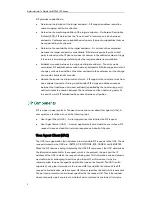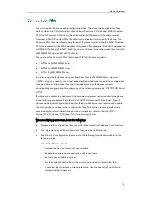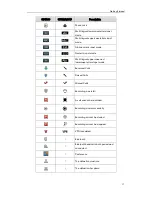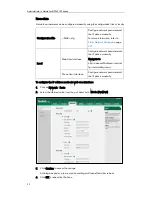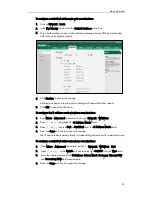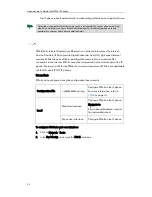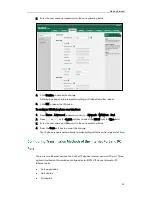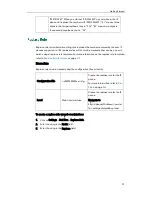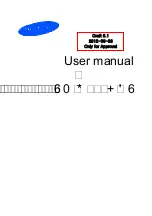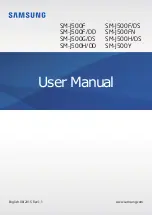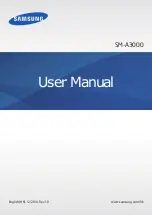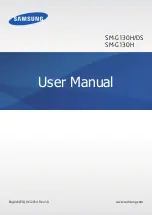
Getting Started
15
You can deploy IP phones using configuration files. There are two configuration files
both of which are CFG formatted. We call them Common CFG file and MAC-Oriented
CFG file. A Common CFG file will be effectual for all IP phones of the same model.
However, a MAC-Oriented CFG file will only be effectual for a specific IP phone. The
Common CFG file has a fixed name for each IP phone model, while the MAC-Oriented
CFG file is named as the MAC address of IP phones. For example, if the MAC address of
a SIP-T46G IP phone is 001565113af5, the names of these two configuration files must be:
y000000000028.cfg and 001565113af5.cfg.
The name of the Common CFG file for each SIP-T4X IP phone model is:
SIP-T46G: y000000000028.cfg
SIP-T42G: y000000000029.cfg
SIP-T41P: y000000000036.cfg
In order to deploy IP phones using configuration files (<y0000000000xx>.cfg and
<MAC>.cfg), you need to use a text-based editing application to edit the configuration
files, and store configuration files to a provisioning server. IP phones support
downloading configuration files using any of the following protocols: FTP, TFTP, HTTP and
HTTPS.
IP phones can obtain the address of the provisioning server during startup through one
of the following processes: Zero Touch, PnP, DHCP Options and Phone Flash. Then IP
phones download configuration files from the provisioning server, resolve and update
the configurations written in the configuration files. This entire process is called auto
provisioning. For more information on auto provisioning, refer to
Yealink_SIP-T2
Series_T19P_T4_Series_IP_Phones_Auto_Provisioning_Guide
.
When modifying parameters, learn the following:
Parameters in configuration files override those stored in IP phones’ flash memory.
The .cfg extension of the configuration files must be in lowercase.
Each line in a configuration file must use the following format and adhere to the
following rules:
variable-name = value
-
Associate only one value with one variable.
-
Separate variable name and value with equal sign.
-
Set only one variable per line.
-
Put the variable and value on the same line, and do not break the line.
-
Comment the variable on a separated line. Use the pound (#) delimiter to
distinguish the comments.
Summary of Contents for SIP-T4X
Page 1: ...T 4 XI PP h o n e A d mi n i s t r a t o r G u i d e...
Page 2: ......
Page 15: ...Administrator s Guide for SIP T4X IP Phones xiv...
Page 23: ...Administrator s Guide for SIP T4X IP Phones 8...
Page 217: ...Administrator s Guide for SIP T4X IP Phones 202...
Page 233: ...Administrator s Guide for SIP T4X IP Phones 218...
Page 245: ...Administrator s Guide for SIP T4X IP Phones 230...
Page 257: ...Administrator s Guide for SIP T4X IP Phones 242...


